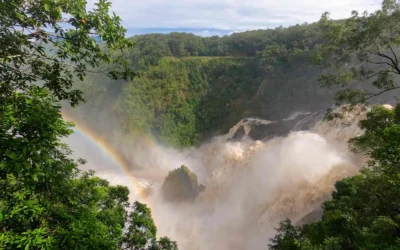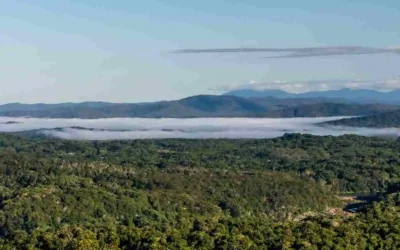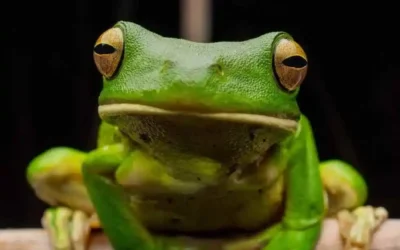The Southern Cassowary
A Living Dinosaur, found in the ancient rainforest!
What could make your journey over and through the ancient rainforest even more special? The sighting of a living dinosaur of course! Well, a very close descendent of dinosaurs dating back through evolution 65 million years, the Southern Cassowary (Casuarius casuarius).
The World Heritage Listed Tropical Rainforest is an ancient land descending from Pangaea and Gondwana and has a vast array of flora and fauna which is endemic to this region but nothing can be more impressive than seeing a Southern Cassowary in its natural surroundings. An ancient bird in an ancient rainforest!
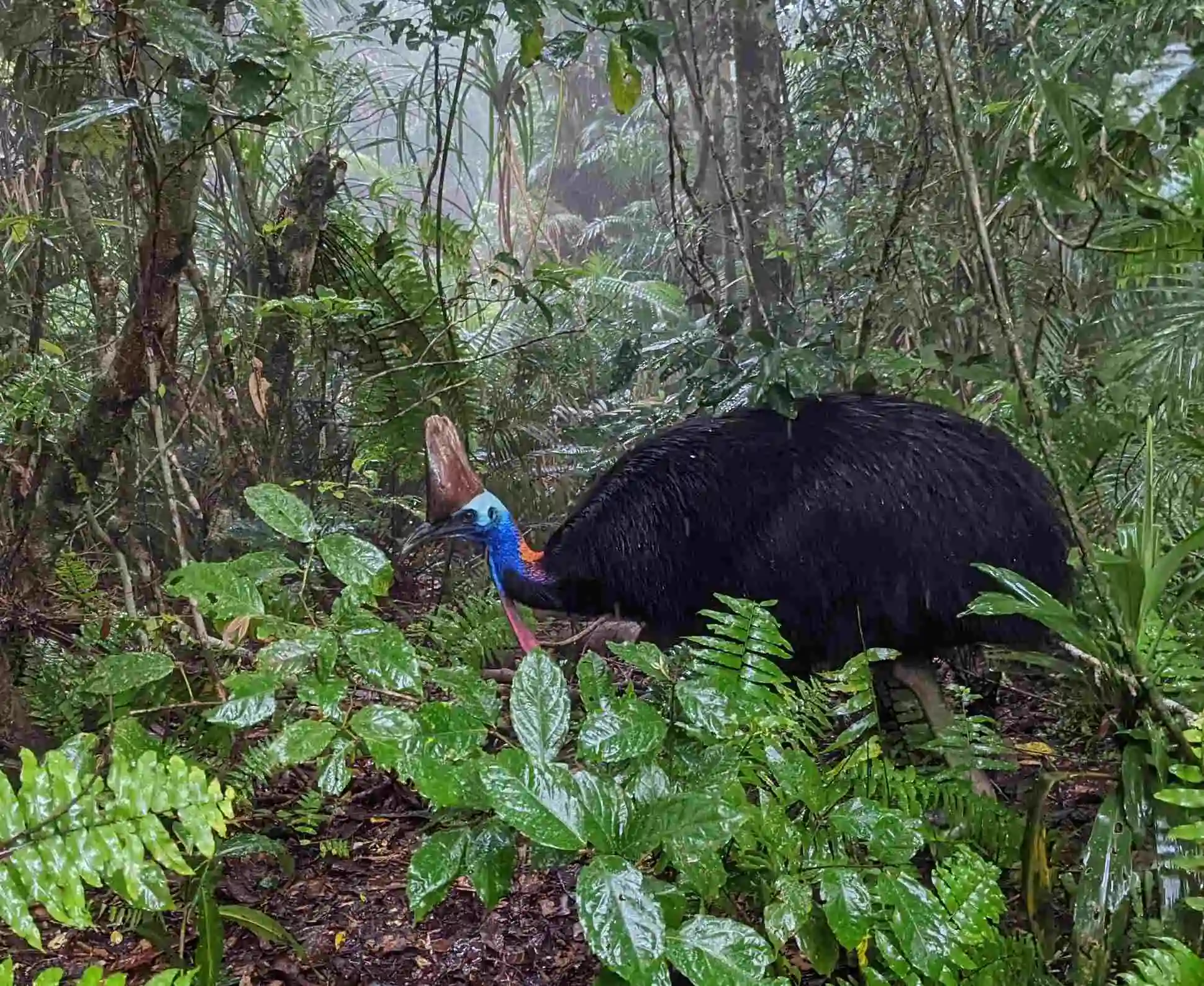
A Southern Cassowary exploring the forest floor at Red Peak
Are Southern Cassowaries endangered?
The Southern Cassowary is listed as endangered under the Commonwealth Environment Protection and Biodiversity Conservation Act 1999. Population figures in Tropical Queensland are estimated to be around 4,600 in the wild.
The Queensland Government Environmental Protection Agency implemented a cassowary recovery plan with the aim to protect cassowaries, their habitats, create wildlife corridors, reduce threats through community involvement and cassowary rescue, rehabilitation and release.
Where are Southern Cassowaries found?
The Southern Cassowary is found in Tropical Queensland, south Papua New Guinea and Indonesia. They reside in dense tropical rainforest environments, just like the Wet Tropics.
Normally a shy and elusive large bird the cassowary is happy roaming an average territorial area of 10km deep in the rainforest, however, the female will travel between territories looking for males during mating season.
These pre-historic looking creatures can sometimes be spotted at Red Peak or Barron Falls during a Skyrail Rainforest Cableway experience. The fig trees around the boardwalks flower and fruit in these areas of the rainforest and this brings the impressive looking birds closer to the guests for viewing.
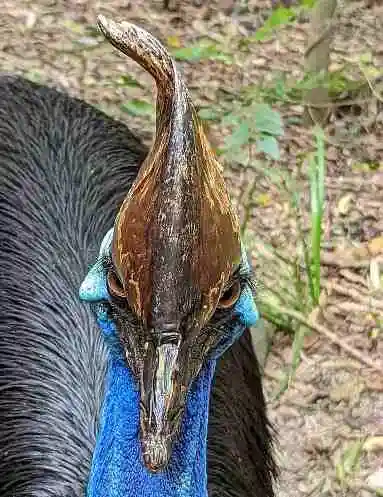
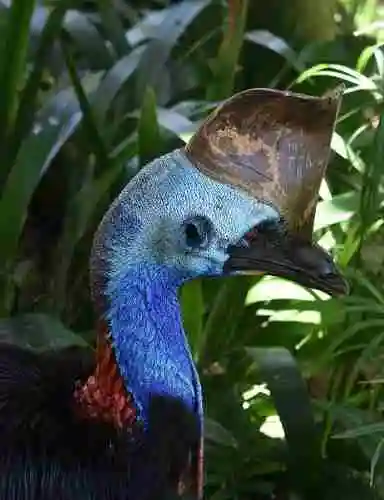
What does the Southern Cassowary look like?
A large flightless bird with a height of up to 1.8 metres tall and weighing up to 80kg. Being the third tallest bird on earth, you would wonder how you could miss them if you were in the same area, but they are quite sneaky!
The Southern Cassowary moves quietly through the dense rainforest, often alone, blending in rather surprisingly. A dark black quilled feather body with a large casque on the top of their head, made from the same keratin as your fingernails and thought to detect low frequency vibrations across long distances, such as the calls of other Cassowaries. In females this casque is taller and they are usually slightly bigger birds than the males. Their head is blue with red wattles hanging around the neck and up to 7 inches. Long thick powerful legs with three toes and a dagger like claw, which can grow up to 4.5 inches in length.
Even if you haven’t seen a Southern Cassowary it sounds like a living dinosaur in the rainforest!
What does the Southern Cassowary eat?
The Southern Cassowary plays a huge role in the survival and regeneration of tropical rainforests. They forage the rainforest floor eating fruits and seeds fallen from the trees, but will eat small vertebrates, invertebrates, fungi and plants. Cassowaries have a unique digestive system with a rare combination of enzymes which quickly obtain nutrients leaving the seeds whole for dispersal in the forest as the Cassowary continues it’s travels. It can eat more than 238 different types of plant seeds, including the vibrant purple Cassowary Plum, named in connection to these birds.
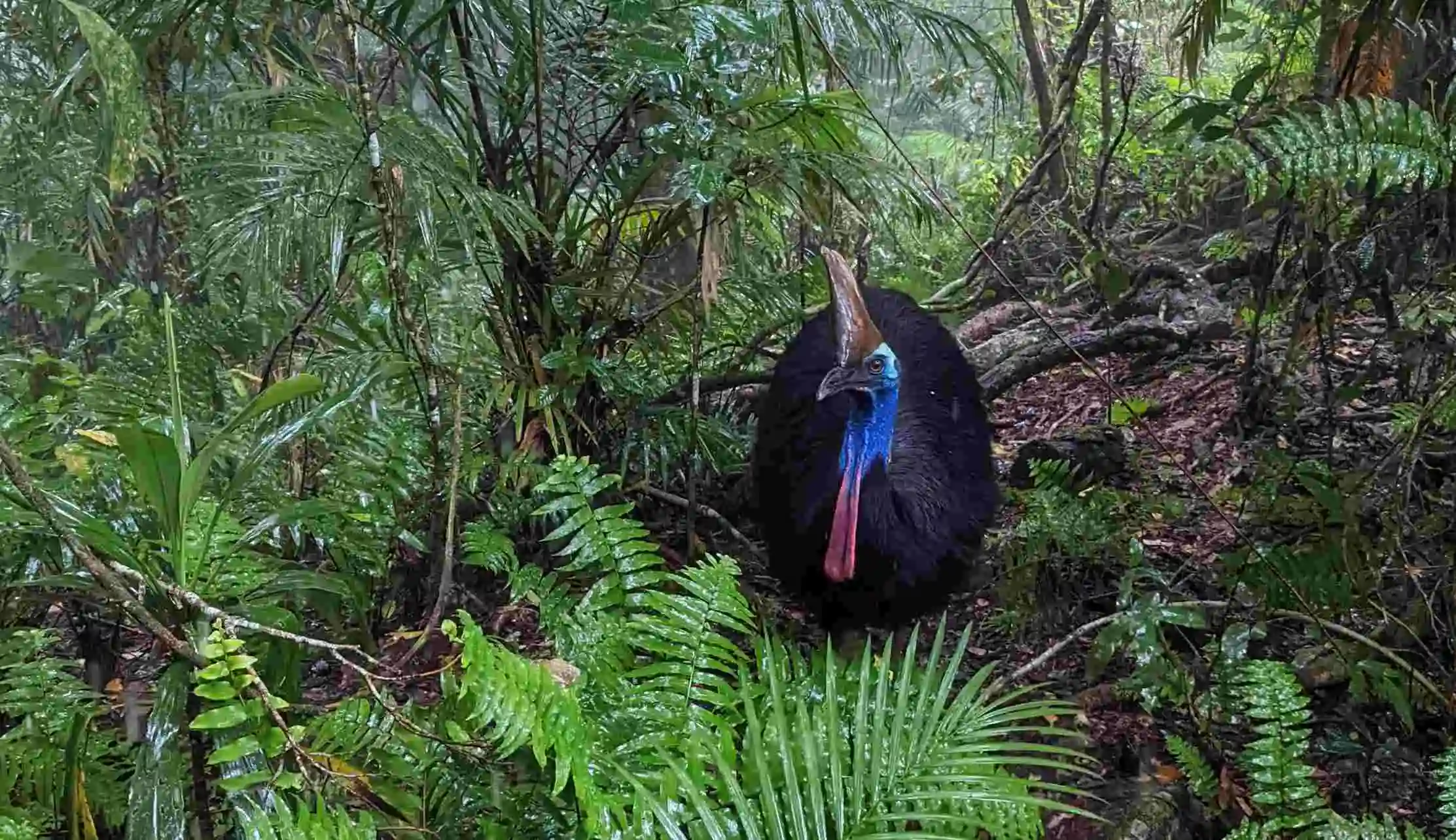
A living dinosaur spotted at Red Peak at Skyrail Rainforest Cableway
Does the Southern Cassowary lay eggs?
They sure do!
May to December is the mating season of the Southern Cassowary and this is when you have the best chance to see them. Female cassowaries will travel a greater distance in search for a mate. Once the female cassowary has laid her eggs, usually between 3-5 big green eggs, she will leave and look for another mate. She can do this several times during the mating season. Eggs are green in colour because of biliverdin, a common pigment found in bird eggshells.
It is the male Southern Cassowary that builds the nest, incubates the eggs and raises the chicks once hatched while the female moves along on her rainforest journey. The young cassowaries become independant at about 9 months and reach maturity at roughly 3 years.
Is the Southern Cassowary dangerous?
Although a very impressive sounding bird and one you would want to see for yourself, distance is advised and respect is given. The Southern Cassowary likes to stroll through the rainforest and spends most of it’s time looking for food, but like any wild animal if they feel thretened they can attack. Jumping and striking with the sharp claw on their feet.
In the Rainforest Discovery Zone at Red Peak our Cassowary display depicts a life size Cassowary male and his chicks foraging in the forest and if you join a complimentary Ranger Guided Tour, they will tell you why Cassowaries are so important for the rainforest biodiversity and ecosystem. Our Rangers will unlock the secrets of the ancient rainforest and the Southern Cassowary!
You could be ticking the bucket list twice when you visit Skyrail Rainforest Cableway and not only will you travel above and deep into the world’s oldest continually surviving tropical rainforest but also, you might be lucky enough to see a Southern Cassowary. ✅✅
Happy dinosaur spotting!

